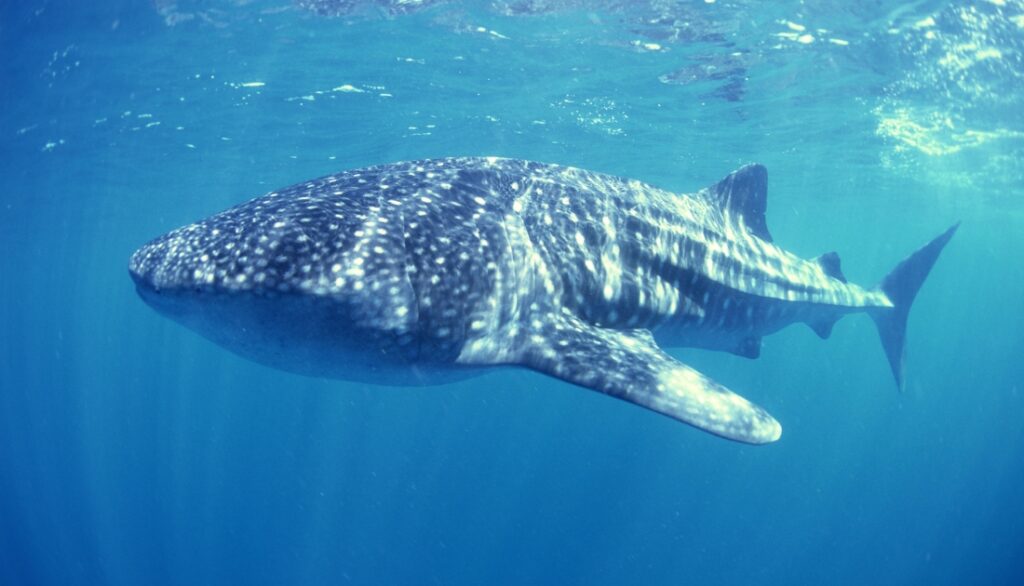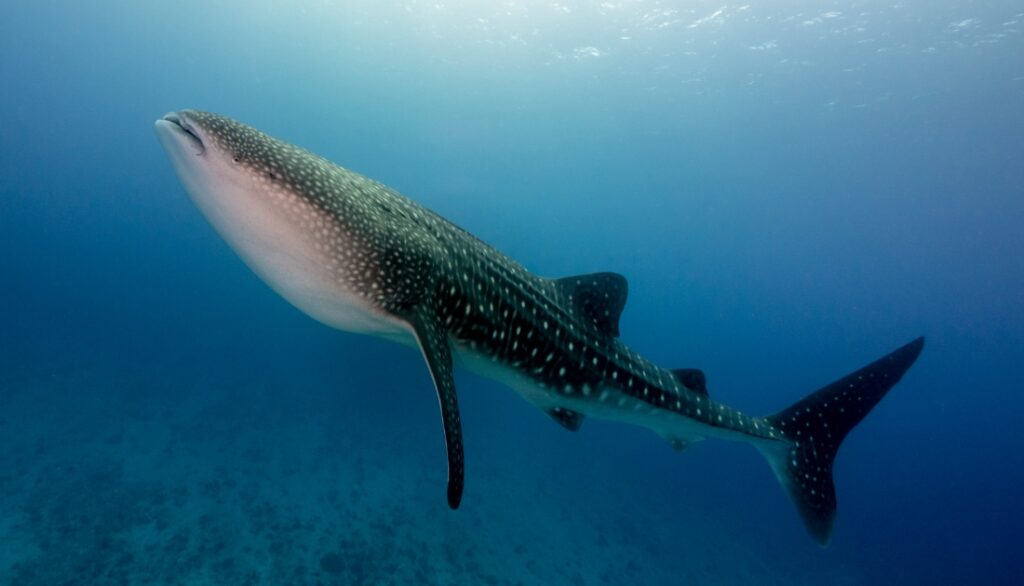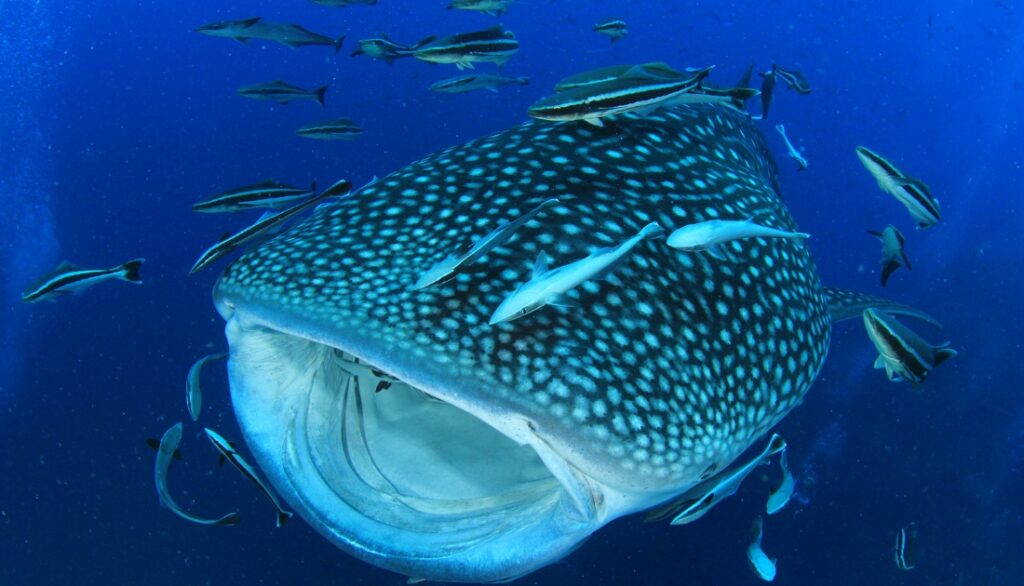Do whale shark have scale? (Real answer)

Do whale shark have scale? (Real answer)
Similar to other sharks, whale sharks exhibit distinct features in their fins, bone structure, and scales. Unlike typical fish scales, whale sharks possess specialized scales known as dermal denticles, resembling miniature teeth. These structures serve a dual purpose by providing protection and enhancing the shark’s swimming speed.
Despite being classified as fish, sharks, including whale sharks, showcase notable differences in their bodily structures compared to conventional fish.
Whale Sharks appearance
The appearance of whale sharks is marked by a blend of grayish, brownish, or bluish hues on their backs, contrasted with a pristine white underbelly. A distinct pattern, akin to tiger sharks but adorned with spots instead of stripes, embellishes their backs.
Contrary to their name, whale sharks, scientifically known as Rhincodon typus, share no significant genetic connection with whales. Belonging to the Orectolobiformes order, these gentle giants are cartilaginous fishes, much like other sharks.

Adopting a filter-feeding approach reminiscent of blue whales, whale sharks feed on krill, fish eggs, and small fishes. Their feeding mechanism involves swimming with mouths wide open, allowing water to bring in their diminutive prey.
Despite their enormous size, whale sharks lack an intimidating nature. Unlike some sharks, their narrow throat restricts them to consuming small fish, incapable of accommodating larger prey.
Earning the title of the world’s largest fish species, whale sharks can reach staggering lengths of up to 40 feet (12 meters).
See Also: Seals and sea lions comparison
Do All sharks have scales
The taxonomic class Osteichthyes encompasses a staggering 96% of all fish species, showcasing remarkable diversity. Among these, three distinct types of scales are observed: cosmoid, ganoid, and cycloid/ctenoid.
In contrast, the Chondrichthyes class, represented by sharks and rays, features unique placoid scales. Shark scales, including those of the magnificent whale sharks, share this distinctive characteristic. While scales are a common feature among fish, the structure of shark scales sets them apart. Referred to as dermal denticles, or “skin teeth,” these scales don’t increase in size with the shark’s growth; instead, sharks grow additional scales as needed.
The term “dermal denticles” is derived from their tooth-like structure, resembling the teeth found in a shark’s mouth.
How whale shark scale help in swimming
Whale shark scales, known as dermal denticles, play a crucial role in enhancing the swimming abilities of these majestic creatures. Unlike traditional fish scales, dermal denticles are more like tiny teeth covering the skin.

The unique structure of dermal denticles helps reduce drag in the water, promoting hydrodynamic efficiency. This adaptation contributes to the whale shark’s ability to navigate through the ocean with minimal resistance.
Acting as a form of armor, dermal denticles provide protection against potential abrasions and parasites. The robust outer layer formed by these scales shields the whale shark’s skin, ensuring durability in various ocean environments.
Whale sharks possess small pores distributed across their skin, which play a crucial role in detecting pressure changes in the surrounding water. Alongside their electroreceptors, these pores are essential for the shark’s navigation abilities.
The unique scales of whale sharks serve to maintain the functionality of these sensory organs by regulating water flow. By ensuring that these pores remain unobstructed, the scales contribute to the shark’s remarkable sensitivity to its aquatic environment, enabling precise movements and navigation even in vast ocean expanses.
Dermal denticles contribute to the streamlined shape of the whale shark. This streamlined form, combined with the reduced drag, allows for smoother and more energy-efficient swimming, particularly important for a creature of such considerable size.
How whale shark scale are protective
The placoid scales of sharks are robust and tough, providing a formidable barrier that is challenging to bite through or scratch. A primary advantage of these scales is their protective function.

These scales serve as a defense mechanism, shielding sharks from potential threats, including small organisms like parasites commonly found in the ocean, such as lampreys, mites, sea-lice, and barnacles.
While the layered structure of shark scales contributes to deterring parasites, it’s important to note that it may not offer absolute protection against all parasites.
Additionally, these scales play a role in enhancing swimming capabilities. Attached to the skin at their base and tapering to a pointy tip known as a crown, shark scales contribute to the streamlined efficiency of their movement through the water.



